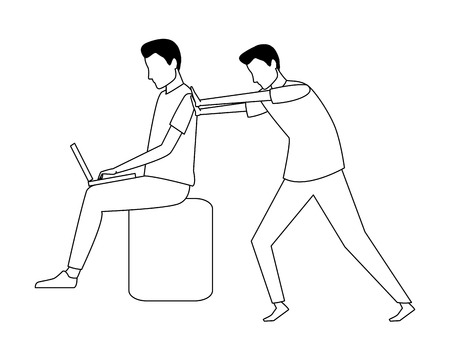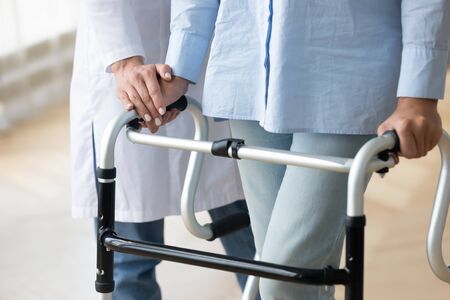Introduction to Home Modification for Seniors
As we age, our needs and abilities change, and the place we call home should adapt with us. In the United States, many older adults wish to continue living independently in their own homes for as long as possible. This desire is deeply rooted in American culture, where personal independence and comfort are highly valued. However, common features of traditional homes can sometimes present challenges and even dangers for seniors, especially when it comes to preventing falls and maintaining everyday safety.
Home modification means making changes to a house so that it better suits the needs of its residents. For seniors, this often involves improving safety and accessibility while also keeping the home comfortable and familiar. Simple updates, such as adding grab bars or improving lighting, can make a big difference. These adjustments not only help prevent accidents but also support seniors in staying active and independent.
Why Home Modifications Matter
Falls are one of the leading causes of injury among older Americans. According to the Centers for Disease Control and Prevention (CDC), millions of seniors fall each year, and many of these falls happen at home. By making thoughtful modifications, families can create safer environments that reduce these risks.
Common Challenges Seniors Face at Home
| Challenge | Potential Risks | Simple Modification Ideas |
|---|---|---|
| Poor Lighting | Tripping over objects or missing steps | Add brighter bulbs, motion-sensor lights |
| Slippery Floors | Slips in bathrooms or kitchens | Install non-slip mats, use textured flooring |
| Stairs Without Handrails | Losing balance on steps | Add sturdy handrails on both sides of stairs |
| Narrow Doorways | Difficulty moving with walkers or wheelchairs | Widen doorways or install offset hinges |
| No Support in Bathrooms | Falls while getting in/out of tubs or showers | Add grab bars near toilets and inside showers/tubs |
The Importance of Comfort and Independence
Beyond just safety, home modifications aim to maintain a sense of comfort and personal dignity for seniors. Whether it’s being able to cook in their own kitchen or simply move around freely, these changes help older adults stay connected with their routines and communities. In American culture, this kind of independence is often seen as key to aging well—and modifying homes is an important step in supporting that goal.
2. Common Fall Risks in the Home Environment
Many seniors want to continue living comfortably and independently at home. However, there are several common hazards in a typical household that can increase the risk of falls. Understanding these risks is the first step toward making the home a safer place.
Slippery Floors
Floors in kitchens, bathrooms, and entryways can become slippery due to water, spills, or even certain types of flooring materials like tile or polished wood. Seniors may have trouble keeping their balance on these surfaces, especially if they are wearing socks or shoes with little grip.
Tip:
Use non-slip mats and rugs in areas prone to getting wet, such as bathrooms and kitchens. Make sure all rugs have non-skid backing.
Uneven Surfaces
Transition areas where one type of flooring meets another, such as from carpet to tile, can create small but dangerous bumps or gaps. Steps inside the home or thresholds at doorways also present tripping hazards.
Tip:
Install transition strips between different types of flooring and use ramps over small steps if needed.
Clutter and Obstructions
Items left on the floor—like shoes, electrical cords, pet toys, or stacks of magazines—can easily cause someone to trip. Narrow walkways crowded with furniture make it harder for seniors to move around safely.
Tip:
Keep walkways clear and remove unnecessary furniture. Make sure frequently used paths are free from clutter.
Poor Lighting
Inadequate lighting makes it difficult to see obstacles, especially at night or in hallways and stairwells. Shadows and dark corners increase the risk of missteps.
Tip:
Add night lights in bedrooms, bathrooms, and hallways. Use brighter bulbs in key areas and consider installing motion-activated lights for extra safety.
Summary Table: Typical Home Hazards for Seniors
| Hazard | Description | Simple Fix |
|---|---|---|
| Slippery Floors | Mats without grip, spills, slick surfaces | Add non-slip mats; clean up spills quickly |
| Uneven Surfaces | Bumps between floors, small steps | Add ramps or transition strips |
| Clutter & Obstructions | Objects on floor or crowded pathways | Clear walkways; organize belongings |
| Poor Lighting | Dim bulbs, lack of night lights | Add night lights; use brighter bulbs |
Tackling these common hazards can make a big difference in reducing fall risks at home. Simple changes often have a huge impact on day-to-day safety for seniors.

3. Essential Home Modifications for Safety
Making a home safer for seniors often means making small but important changes that fit common American home layouts and styles. Here are some detailed recommendations to help reduce fall risks and boost safety in the house.
Grab Bars and Handrails
Installing grab bars is one of the simplest ways to increase stability, especially in places where falls are most likely, like bathrooms and stairways. For U.S. homes with bathtubs or walk-in showers, place sturdy grab bars near the entry, inside the shower, and next to the toilet. Make sure handrails are securely fastened on both sides of staircases, whether they’re short steps at an entryway or a full flight between floors.
Non-Slip Flooring
Slippery surfaces are a major fall hazard. Replace area rugs with non-slip versions or use rug grippers underneath. In kitchens and bathrooms—two areas prone to water spills—install slip-resistant flooring materials such as textured vinyl or rubber tiles, which are popular and widely available in the U.S. Consider using non-slip mats inside showers and tubs as well.
Adequate Lighting
Poor lighting can make it hard to see obstacles, especially at night. Add bright LED fixtures in hallways, stairwells, entryways, and bathrooms. Use motion-sensor night lights in bedrooms and along paths to the bathroom for easier navigation after dark. Consider smart lighting options that can be controlled by voice or mobile apps, a growing trend in American homes.
Accessible Bathroom Fixtures
The bathroom can be made much safer with a few strategic upgrades:
| Modification | Description | Common U.S. Options |
|---|---|---|
| Walk-in Showers | No threshold or low-step entry makes access easier and safer. | Tiled walk-in showers or prefabricated shower stalls |
| Raised Toilet Seats | Makes sitting down and standing up less difficult. | Add-on risers or new higher toilets |
| Handheld Showerheads | Allow seated bathing and make showering more flexible. | Detachable models with long hoses |
| Shower Chairs/Benches | Provide a stable place to sit while bathing. | Plastic or teak benches designed for wet areas |
Additional Tips for Common U.S. Home Styles
- Ranch-Style Homes: Focus on single-level modifications like widening doorways for walkers or wheelchairs.
- Split-Level Homes: Pay extra attention to stairs; install additional railings and improve lighting at landings.
- Apartments/Condos: Look for portable solutions (e.g., tension-mounted grab bars) if permanent changes aren’t allowed by building management.
Summary Table: Key Modifications & Benefits
| Area of Home | Recommended Modification | Main Benefit |
|---|---|---|
| Bathroom | Grab bars, non-slip mats, raised toilet seat, walk-in shower | Reduces slips and makes movement safer |
| Kitchens & Living Rooms | Non-slip flooring, remove clutter, secure rugs | Lowers risk of tripping or slipping on smooth surfaces |
| Stairways & Hallways | Doubled handrails, better lighting, clear pathways | Makes navigation easier and safer day or night |
These essential modifications are practical, affordable, and can be adapted to fit most American homes—helping seniors stay safe and independent for longer.
4. Involving Family and Community Resources
When making home modifications for seniors, it’s important to involve family members, caregivers, and community resources. Working together ensures safety improvements are practical, affordable, and tailored to individual needs. Here are some suggestions on how to engage different support systems:
Engaging Family and Caregivers
- Start a Conversation: Talk openly with seniors and their loved ones about safety concerns and daily challenges in the home.
- Assign Roles: Family members can help by researching products, contacting professionals, or assisting with installation.
- Regular Check-Ins: Schedule routine visits or calls to ensure modifications are still working well and address new issues as they arise.
Connecting with Local Support Services
Many organizations in the United States offer help specifically for older adults who want to age safely at home. Below is a table summarizing key resources:
| Resource | How They Can Help | How to Connect |
|---|---|---|
| Area Agencies on Aging (AAA) | Information, referrals, home assessments, funding for modifications | n4a.org |
| Home Improvement Programs | Grants or low-cost loans for accessibility upgrades like ramps or grab bars | Local city/county offices or HUD website |
| Occupational Therapists (OTs) | Professional home evaluations, personalized modification recommendations | Ask your doctor for a referral or visit AOTA.org |
| Community Volunteers & Nonprofits | Free or low-cost labor for minor repairs and installations | Search local volunteer groups or services like Rebuilding Together |
The Value of Teamwork
No one should have to make these changes alone. By bringing together family, friends, professionals, and local agencies, you create a strong support network for safer living. Encourage open communication so everyone is on the same page and can pitch in where needed.
5. Cost Considerations and Funding Resources
Making your home safer and more accessible as you age is an important investment, but the costs can add up quickly. Understanding how to budget for these changes and what financial resources are available can make the process much easier.
Budgeting for Home Modifications
The price of home modifications varies depending on the scope of work. Simple changes like installing grab bars or brighter lighting are usually affordable, while larger renovations such as building ramps or widening doorways can be more expensive. Here’s a general overview:
| Modification Type | Estimated Cost (USD) |
|---|---|
| Grab Bars & Handrails | $100 – $300 each |
| Non-slip Flooring | $800 – $2,500 per room |
| Ramp Installation | $1,000 – $3,000+ |
| Widening Doorways | $300 – $2,500 per doorway |
| Bathroom Remodel for Accessibility | $3,000 – $15,000+ |
It’s wise to create a list of needed improvements and prioritize them based on urgency and budget.
Medicare Coverage for Home Modifications
Traditional Medicare generally does not pay for home modifications unless they are medically necessary equipment prescribed by a doctor (like hospital beds or wheelchairs). However, some Medicare Advantage plans may offer limited benefits for certain home safety features. Always check with your plan provider about your options.
Medicaid Waivers and Home Modifications
If you qualify for Medicaid, many states offer Home and Community-Based Services (HCBS) waivers. These waivers can help pay for accessibility improvements that allow seniors to remain safely at home instead of moving into a nursing facility. Program details vary by state, so check with your local Medicaid office.
Veterans Affairs (VA) Programs
If you are a veteran, you may be eligible for financial support through several VA programs:
- Home Improvements and Structural Alterations (HISA) Grant: Helps cover medically necessary home modifications.
- Specially Adapted Housing (SAH) Grant: Assists veterans with service-connected disabilities in adapting their homes.
- Special Home Adaptation (SHA) Grant: Provides funds for certain types of home modifications for qualified veterans.
Other Grants and Funding Sources for Seniors
A variety of organizations and agencies offer grants or low-interest loans to help seniors pay for home modifications. Some common resources include:
| Resource Name | Description | How to Apply/Find Out More |
|---|---|---|
| Aging & Disability Resource Centers (ADRCs) | Connects older adults to local funding opportunities and advice. | Eldercare Locator Website |
| US Department of Agriculture (USDA) Rural Development Grants/Loans | Assistance for seniors in rural areas needing home repairs or modifications. | USDA Website |
| Local Nonprofits & Rebuilding Together Affiliates | Many nonprofits offer free or low-cost modification services to eligible seniors. | Rebuilding Together Locator |
| State Housing Agencies & Area Agencies on Aging (AAA) | Offer various local grants or assistance programs. | n4a.org – National Association of Area Agencies on Aging |
Key Tips When Planning Financially:
- Create a detailed budget for your needs.
- Contact local agencies early—they can guide you to available resources.
- If you’re a veteran or have low income, ask specifically about targeted programs.
Your Next Steps:
If you are considering modifying your home to prevent falls and stay safe as you age, don’t hesitate to reach out to these resources. With proper planning and the right support, home modification is possible without overwhelming costs.


